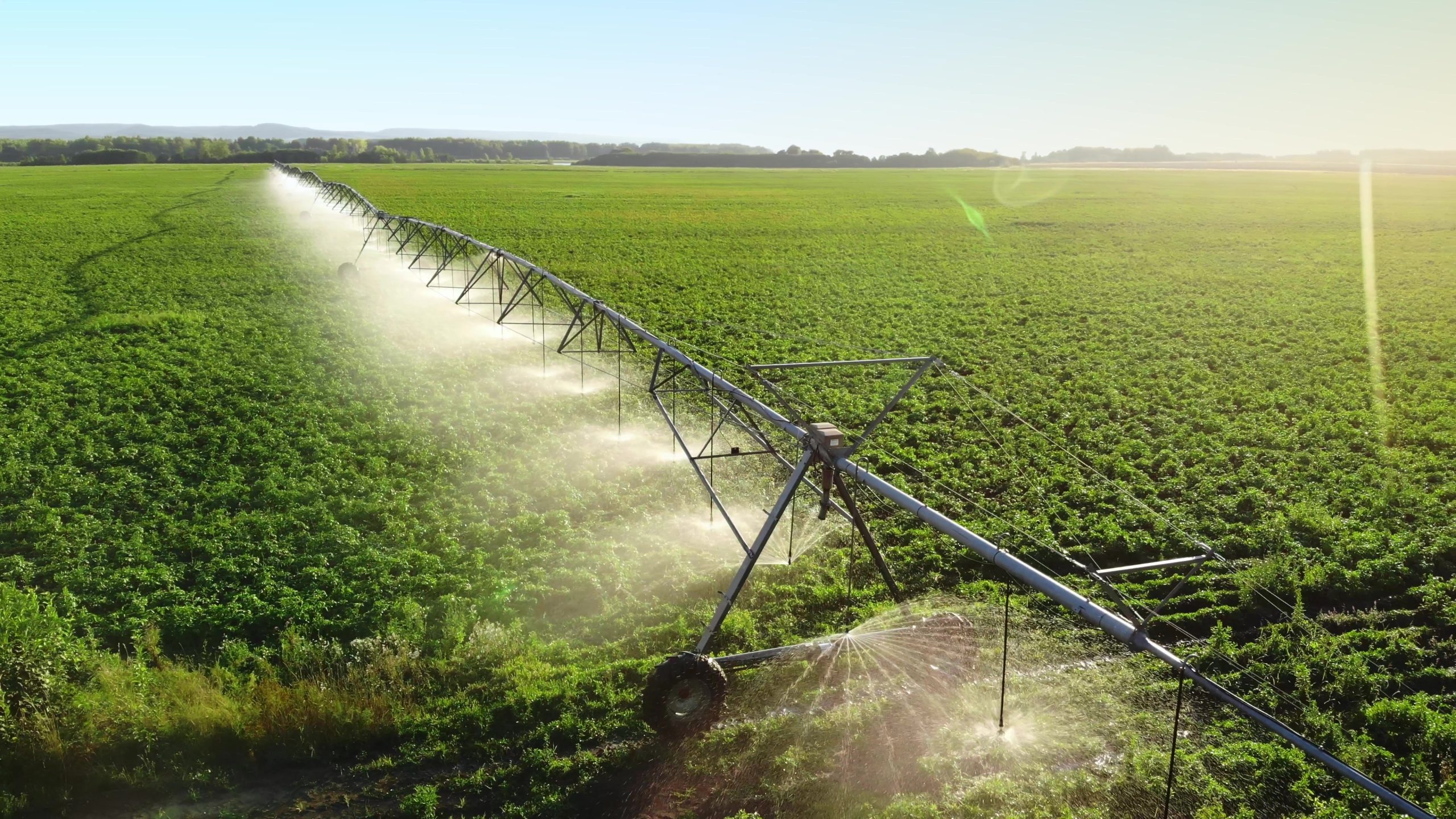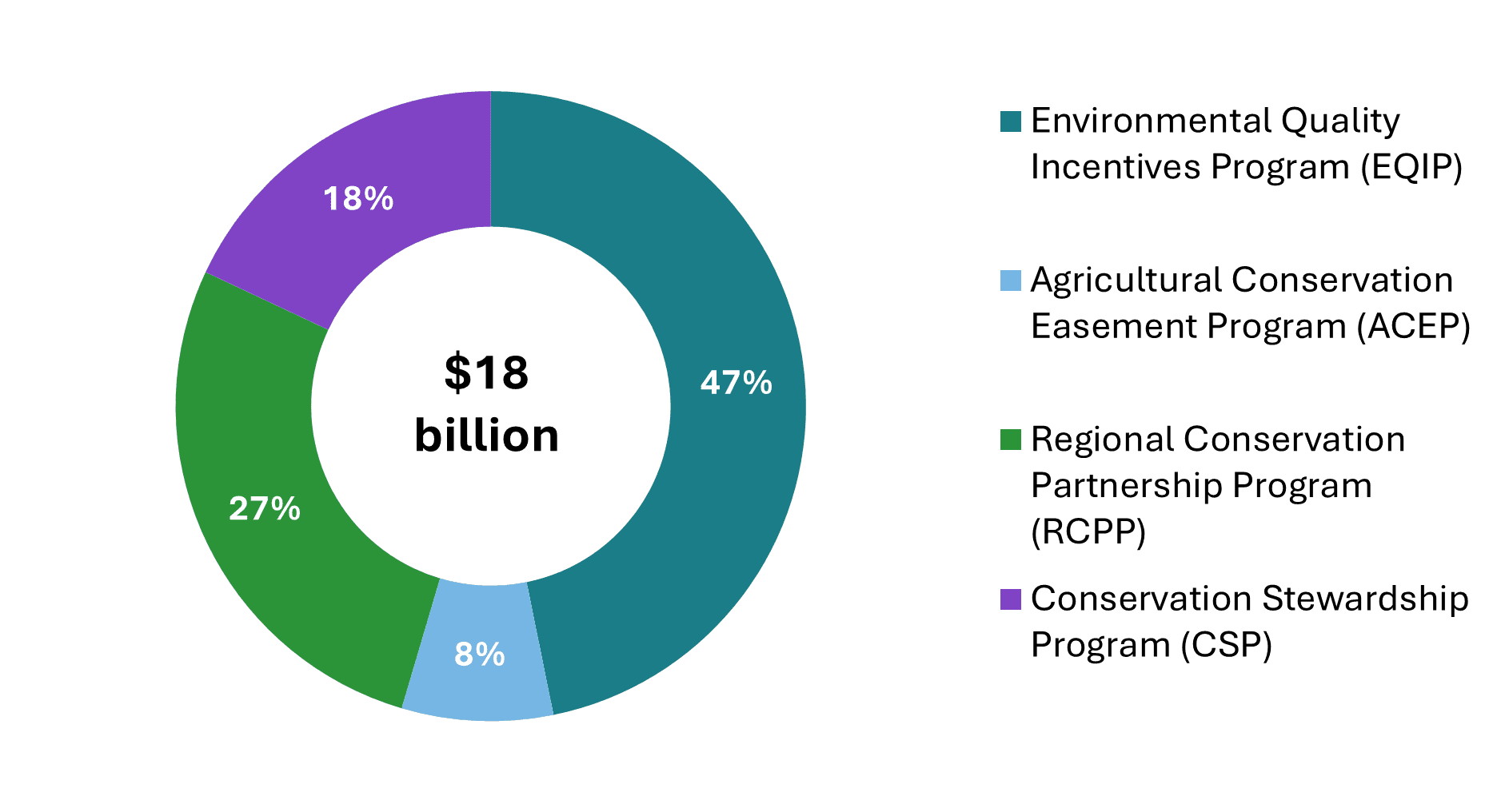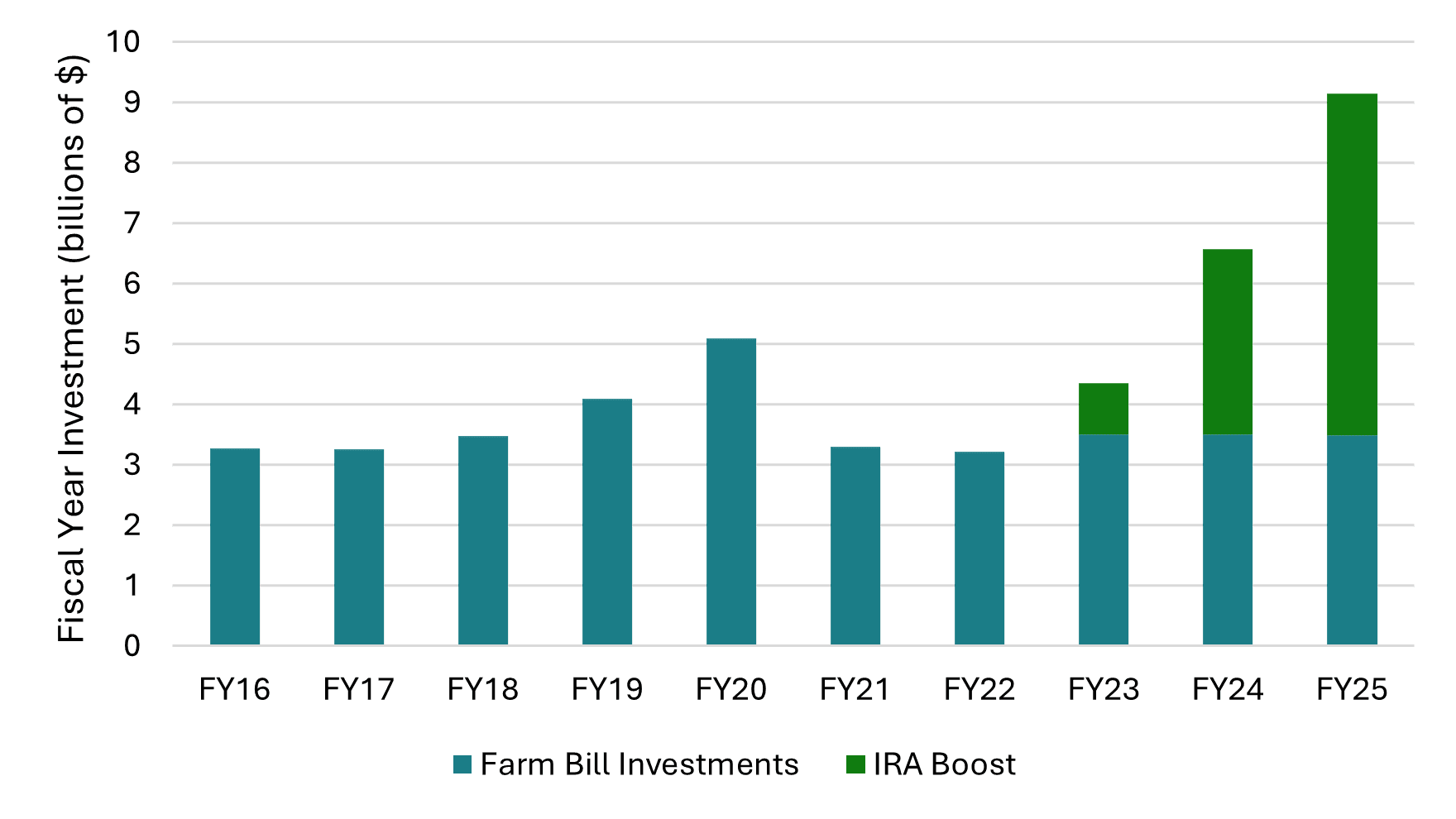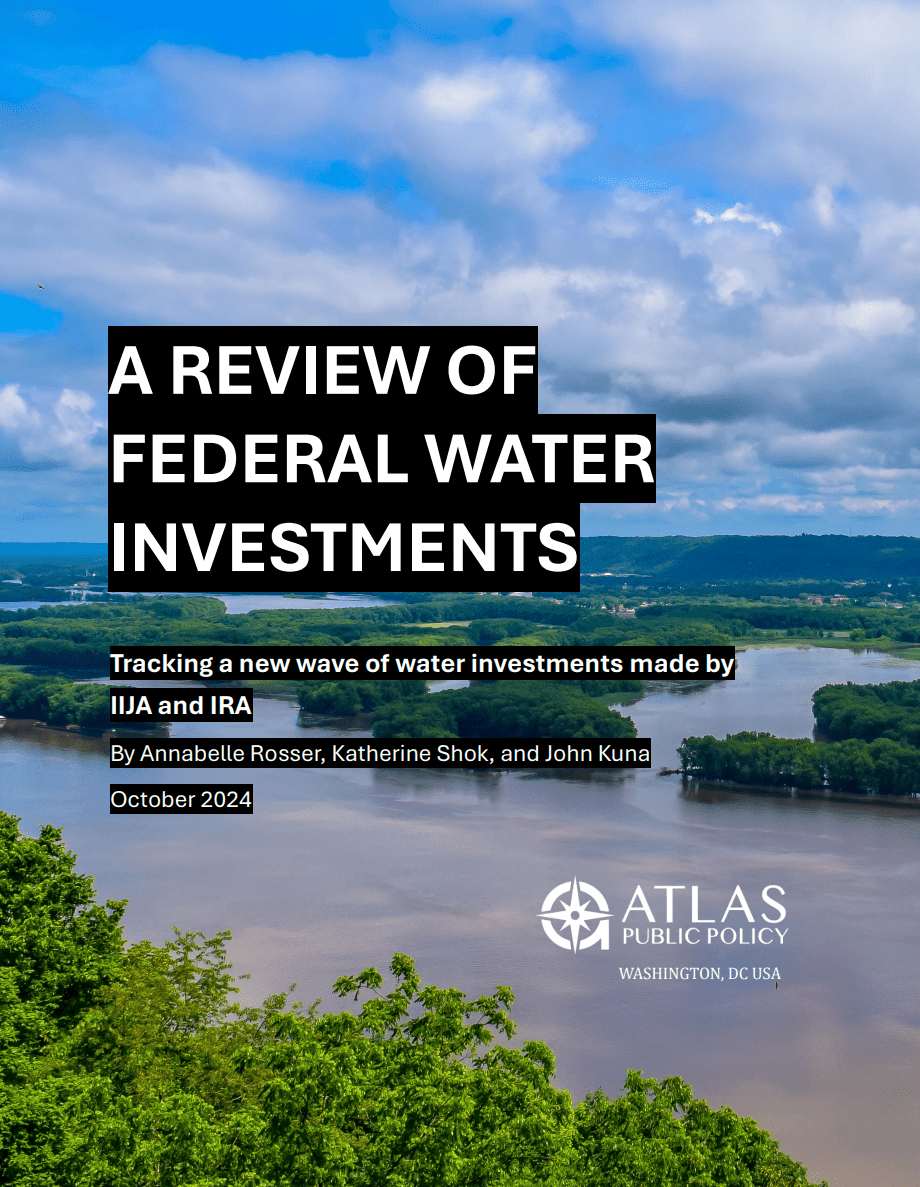
The Farm Bill is an omnibus, “must-pass” law that serves as the country’s primary federal agricultural policy. First passed nearly a century ago as part of New Deal legislation in 1933, the law is renewed roughly every five years. The latest iteration was passed in 2018, establishing a deadline for renewal at the end of last year. Due to a variety of factors, namely the budget crisis, the law was extended a year, delaying the renewal process to 2024. With the Farm Bill up for renewal, this Spotlight will dive into the four core agricultural conservation programs funded by the bill and highlight the boost in climate-smart agriculture funding by the Inflation Reduction Act (IRA) in 2022.
The IRA invested $18 billion into developing climate-resilient agricultural practices by boosting the funding of four longstanding conservation programs: the Environmental Quality Investment Program (EQIP), the Regional Conservation Partnership Program (RCPP), the Conservation Stewardship Program (CSP), and the Agricultural Conservation Easement Program (ACEP). All four are traditionally solely funded by the Farm Bill.
Figure 1. IRA Funds Climate-Smart Agriculture for Four Core Conservation Programs

Source: Water Program Portal’s Opportunities Dashboard, 2024.
Broadly speaking, EQIP, RCPP, CSP, and ACEP offer funding for various mechanisms that conserve working lands and the natural resources — air, water, soil, and wildlife — interconnected with those lands.
EQIP was first authorized in 1996 and provides competitive federal grants to agricultural producers and forest owners to support the implementation of sustainable management practices. Strategies include practices like installing efficient irrigation systems, managing soil nutrients, and restoring pasture. These practices result in improvements to water and air quality, conservation of water, increases in soil health, reduction of soil erosion and sedimentation, improvement and creation of wildlife habitats, and drought mitigation.
RCPP was created in 2014 and consolidated four regional conservation programs. Today, RCPP establishes public-private partnerships with farmers, ranchers, and forest landowners to conserve and restore the sustainable use of soil, water, land, wildlife, and other natural resources at a regional scale. Since 2018, half of the program’s funding has gone toward state and multi-state projects. The other half flows to eight Critical Conservation Areas: the Chesapeake Bay Watershed, the Great Lakes Region, the Mississippi River Basin, the Colorado River Basin, the Longleaf Pine Range, the Columbia River Basin, the California Bay Delta, and the Prairie Grasslands.
CSP evolved from the 2002 Conservation Security Program and was authorized in 2008. It is the largest conservation program by acreage, covering over 70 million acres or 7 percent of all domestic farmland. CSP incentivizes farmers and ranchers to employ practices that protect natural resources on productive lands. The program’s overarching goals are to address resources of regional concern such as water quality or soil, conserve water and energy, and help agricultural producers ameliorate soil, water, and air quality on the lands they manage. Participants are paid to improve, maintain, and actively manage conservation activities on their lands over a five-year period.
Finally, ACEP works with landowners to permanently protect wetlands, grasslands, ranchlands, and farmlands from development or degradation. As of 2014, the program is split into administering Wetland Reserve Easements (WRE) — which protect and restore wetlands that are connected to agricultural lands — and Agricultural Land Easements (ALE) — which protect priority working lands like farmland, ranchland, and grazing lands from development. For each subprogram, NRCS contributes a portion of the property value to the landowner and places it into a long-term (30-year) or permanent easement: a voluntary agreement to limit the use of that land to a wetland or agricultural purposes.
IRA gave each of these programs a significant boost in funding, nearly doubling overall annual spending.
Figure 2. IRA Boosts Funding for Four Key Farm Bill Programs

Source: Water Portal’s Opportunities Dashboard, 2024, and USDA’s Budget Summary Fiscal Years 2016-2024.
This funding was first made available to the agricultural sector in 2023, and after one year USDA has invested about $1.7 billion across the four core programs, including:
- $1.1 billion in 81 projects through RCPP
- $100 million through ACEP
- $250 million through CSP
- $250 million through EQIP
Unlike the baseline funding from the Farm Bill, IRA funds must be used to support climate-smart agricultural practices, a new requirement. The three goals of the climate-smart agriculture framework include: reducing greenhouse gas emissions, enhancing resilience to environmental changes, and doing so while increasing or maintaining productivity and yield. A long list of practices shared by the Department of Agriculture (USDA) fall within this scope, including soil health management, protecting wetlands and wildlife habitat, installing irrigation systems that use energy and water more efficiently, and planting cover crops. Many of these practices provide multiple benefits, and either reduce emissions by increasing the ability of working lands to sequester and store carbon, or by decreasing the energy required to farm them. At the same time, most of these practices improve resiliency to the impacts of climate change, like drought, extreme heat, flooding, and wildfire.
This investment is historic — agriculture makes up approximately 10.6 percent of national emissions, has significant carbon sequestration and storage capacity, and uses nearly half of the nation’s freshwater withdrawals. Yet this is the first time legislation has connected agricultural incentives explicitly to climate mitigation and resilience.
Figure 3. IRA Agricultural Investments
Climate-smart agricultural funding for these four core USDA conservation programs was appropriated by IRA through 2031. However, now that the Farm Bill’s renewal is underway, the Senate Committee on Agriculture, Nutrition, and Forestry is advocating that Congress reallocate some of IRA’s funding to the Farm Bill. As part of this reallocation, they have proposed eliminating the climate-smart practice requirement, arguing that about half of all the current conservation activities practiced by program participants do not meet the climate-smart qualification.
Climate advocates have countered that IRA funding is an intentional boost that is critical for adapting the sector to climate change and that traditional conservation practices continue to be supported by the baseline program funding. Furthermore, farmers are eager for federal support to mitigate climate impacts and improve the resilience of their farms. USDA’s conservation programs are oversubscribed, and IRA’s additional funding helps fill a critical support gap. Congress has yet to publish a renewal bill, but they have until the September 30th deadline to reauthorize the law, just in time for the national election.


